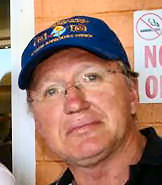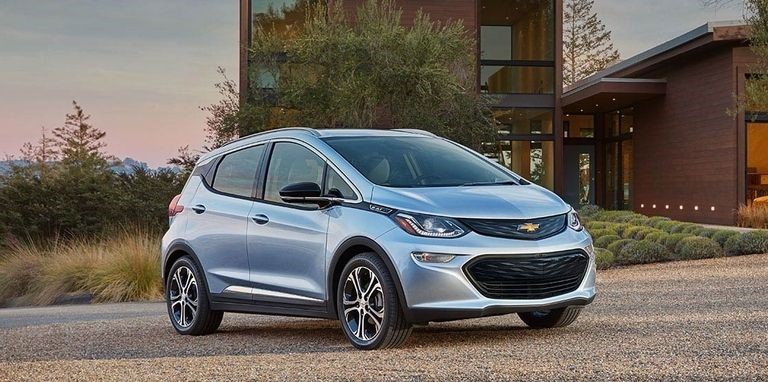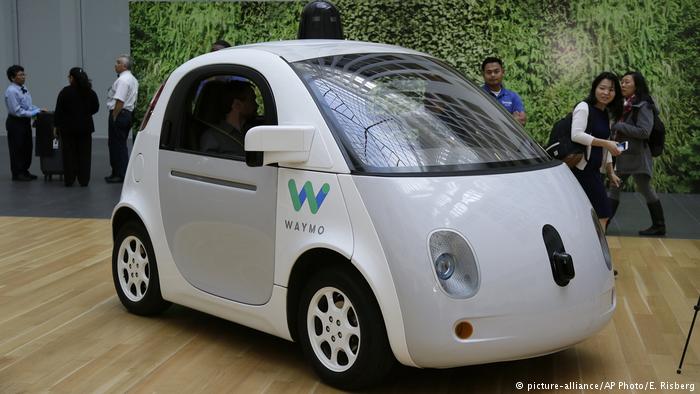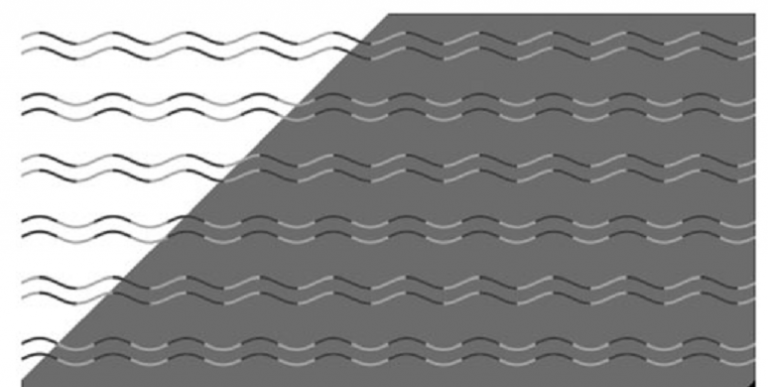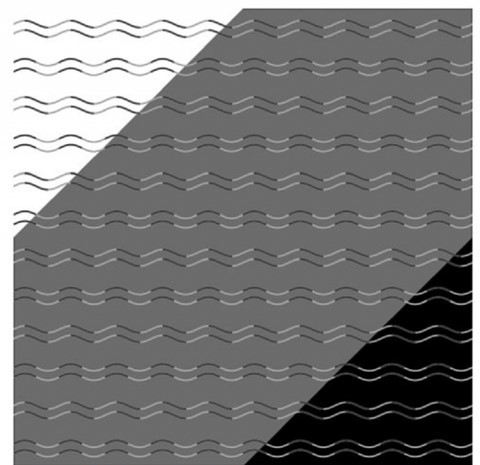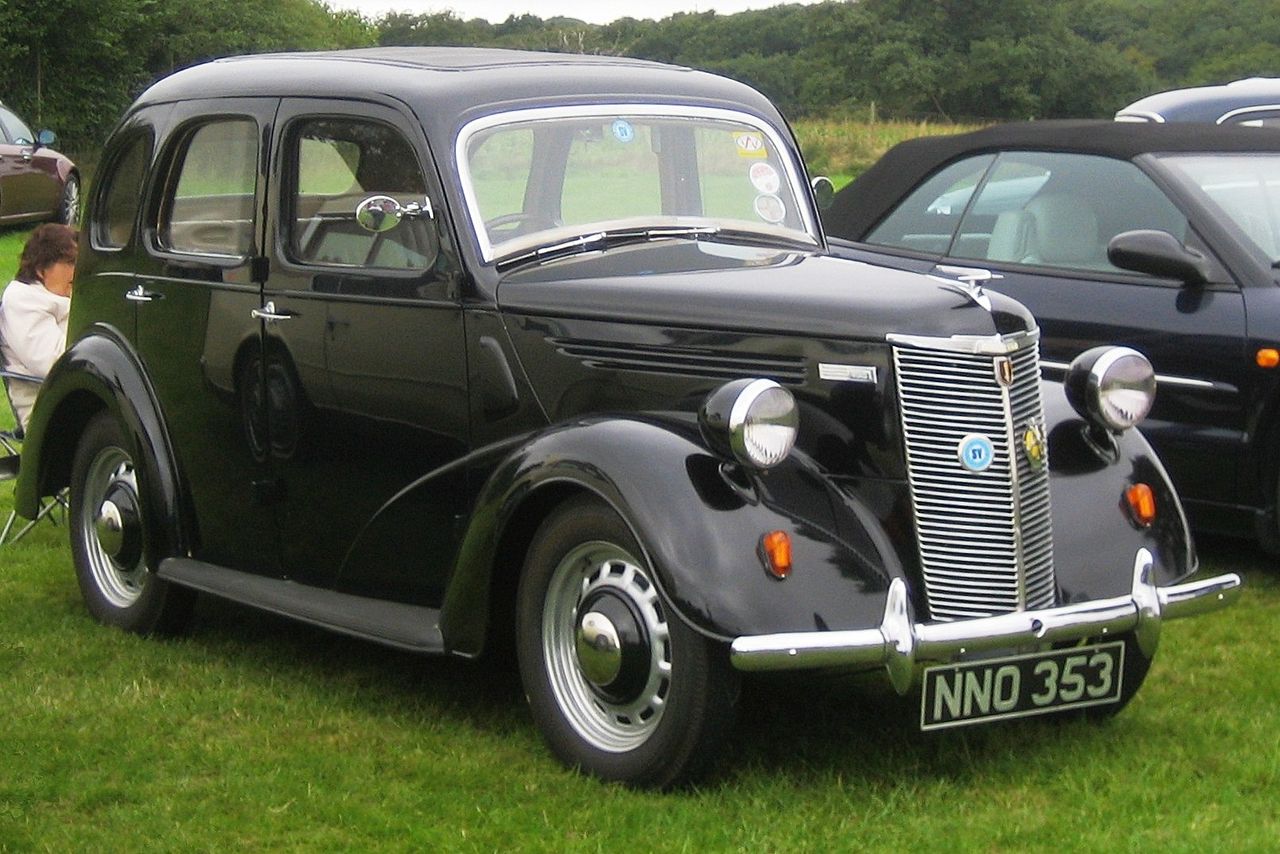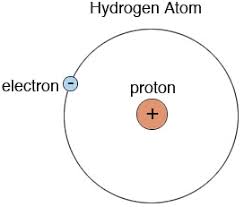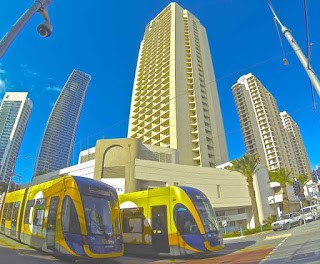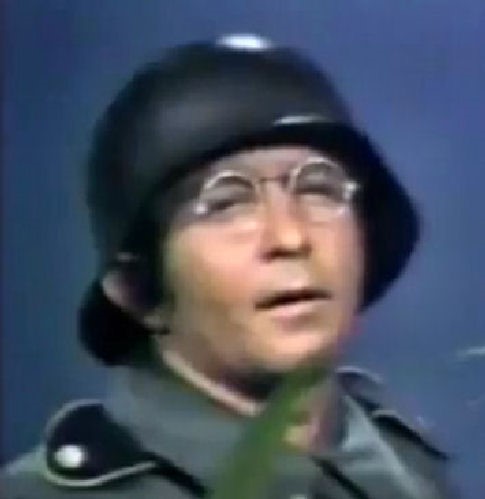|
|
||
|
||
|
Privacy Policy | Editorial Policy | Profit Policy | Join the Association | List of Members | Contact us | Index | Links |
||
|
Back Go to page: 1 2 3 4 5 6 7 8 9 10 11 12 13 14 15 16 17 18 19 20 Forward
|
||
|
Allan George’s Gems.
|
||
|
|
||
|
GM in the US is getting ready to mass produce cars with no steering wheels.
Or pedals, for that matter.
General Motors says it is making the first mass-production autonomous car without a steering wheel or pedals. You just program the GPS with your destination and off it goes. Are they for real??
|
||
|
|
||
|
The company says it has filed a petition with the federal government seeking permission to put the vehicles on the road sometime next year with no human backup drivers. GM's Cruise Automation unit has announced plans to carry passengers in self-driving cars that won't have a backup driver in 2019. The location of the service has not been revealed.
GM spokesman Kevin Kelly says the first of the autonomous Cruise AV’s, based on the Chevrolet Bolt, is being tested. He says the company isn't announcing how many will be made.
Click the pic below to see further info
|
||
|
At a recent technology show in Las Vegas, GM announced its plans to mass-produce driverless vehicles that won’t have conventional controls like steering wheels and pedals as soon as 2019. GM, along with other automakers like Ford and Waymo (the self-driving unit of Google parent Alphabet), are aiming to get autonomous vehicles on public roads that don’t use steering wheels or pedals over the next 1-3 years. This is certainly an ambitious goal, and while the initial uses for these autonomous vehicles are largely limited to ride-hailing and public transportation, the ultimate aim of these companies is to eventually make these vehicles ubiquitous among car owners.
Granted they are still many years from reaching this point (and during that time the sensors and artificial intelligence (AI) installed in these vehicles will improve), we should still be wary of being driven around by a steering wheel and pedal-less self-driving car.
The idea of this technology becoming a reality has captivated the minds of industry researchers, experts, technology enthusiasts, and consumers, however, most of the hype behind this concept is largely driven by how much of a testament this will provide for how far technology has advanced.
|
||
|
|
||
|
A vehicle without a steering wheel or pedals implies the driverless car is capable of operating at an autonomous level of 4 (high automation), or 5 (full automation), where the vehicle accounts for almost every aspect of driving and requires virtually no human intervention. If vehicles with lower autonomy levels aren’t even close to being perfected, why should we believe a driverless car without a steering wheel or pedal will operate more efficiently? Considering how autonomous vehicles across the board still contain notable design and technical flaws along with the overall lack of trust drivers around the world still have for these vehicles, it raises questions surrounding the urgency these automotive giants have behind these projects. Are car companies more concerned about being the first (to develop the first widely used vehicles with this level of autonomy) or ensuring they release the safest and highest quality self-driving vehicles?
Some of the issues surrounding autonomous cars such as efficiency of their sensors in bad weather, navigating over bridges and through construction zones, along with the threat of unpredictable motorists (an interaction that already led to one incident, despite not being the autonomous vehicle’s fault) are diffusible if the driver has the ability to intervene. Every issue mentioned can cause an accident of some kind and even lead to fatalities in severe enough situations—even with the driver’s ability to intervene when necessary. If you put an autonomous steering wheel and pedal-less vehicle in those same situations, the passengers inside that car could be powerless to intervene, especially in situations involving erratic drivers, weather, and road conditions that the vehicle’s sensors and cameras don’t have time to detect or process.
Although the aim of steering wheel and pedal-less autonomous cars is not bad, car companies aiming to deploy these vehicles on public streets in 1-3 years, however, could be jumping the gun. While the initial uses described by companies like Ford and GM for steering wheel and pedal-less cars will be practical at first, they hopefully won’t become any more complicated until researchers work out the major shortcomings we see in vehicles with lower autonomy levels. There has been countless examples of what can happen to a product and company when their goods are rushed out to consumers despite not being fully and properly developed. This isn’t to say that vehicles with complete autonomy will be a complete failure but, I reiterate how important the need is to assure quality—especially when the safety of other people is involved.
It's coming, but don’t hold your breath.
|
||
|
You’re an RAAF aircraft mechanic when:
You’ve said “Oh yes, it’s supposed to look like that.”
|
||
|
New Optical Illusion.
Believe it or not, all the lines in the above pic are sign waves. This is a new optical illusion discovered by researcher Kohske Takahashi which challenges the veracity of what we perceive.
|
||
|
|
||
|
In the image below, the grey and black lines all appear to have the same shape in the upper left and bottom right sections, which have white and black backgrounds, respectively, yet they are all the shape of a basic sine wave but, in the grey middle section, half of the lines appear to be composed of sharp corners. In reality, all of the lines are sine waves all the way across.
|
||
|
|
||
|
It's still unclear exactly why this illusion works, but it has to do with whether each curve is entirely either grey or black, or whether it is half black, half grey. In this second case, our brain perceives the curve as a sharp corner. Takahashi proposes that this is because when our brains are confused, corners are easier to see than curves.
The underlying mechanisms for the gentle curve perception and those of obtuse corner perception are competing with each other in an imbalanced way and the percepts of corner might be dominant in the visual system. Whatever the reason, it's always fascinating to witness the limitations of our own perception, and illusions like these help advance our understanding of how our brains process images.
|
||
|
You’ve had to defuel an aircraft an hour after refuelling it.
|
||
|
Australia Post Concessions.
With a free Australia Post Concession account, you'll pay just 60c per stamp, instead of $1. You can buy up to 50 stamps per year, in booklets of 5 for $3. You'll even get a free booklet of 5 concession stamps to get you started. Are you eligible?
The following Australian Federal Government concession cards are accepted as proof of eligibility for an Australia Post Concession account. Have you got one of the following cards?
If so, apply today at your local post office.
American Airlines.
At American Airlines, active military members board early for every flight, but it's not just the daily trips that make an impact. Several times a year they proudly sponsor honour flights, which fly hundreds of veterans to Washington, D.C. to see the monuments that stand in their honour. They say it's their privilege to serve those who have served their country.
In November last year. American Airlines and its employees continued a long standing tradition of supporting and honouring the American nation’s heroes, active military, veterans, first responders and their families through a variety of initiatives and programs including the eighth annual Salute to the Troops.
“American Airlines and its more than 100,000 employees have a deep sense of pride and gratitude for the men and women who have served and sacrificed so much to protect our nation and our freedoms,” said David Seymour, senior vice president, Integrated Operations at American and graduate of the United States Military Academy at West Point. “This gratitude and appreciation is evident by our crew of pilots and flight attendants, who have volunteered their time this Veterans Day to serve these heroes on a special charter flight to Las Vegas. These men and women will freely give of their time to fly more than 90 wounded, ill and injured veterans and their guests to a well-deserved weekend of healing and relaxation.”
What a wonderful initiative - if only!!
See the video below: |
||
|
|
||
|
About the American Airlines Group.
American Airlines has a long-standing tradition of serving those who serve the US nation dating back to 1926. Today more than 6,000 of American’s 100,000 employees are serving in the US armed forces or are veterans. American Airlines’ initiatives include providing support to several organizations including; The Medal of Honour Foundation, the Gary Sinise Foundation and Airpower Foundation’s Sky Ball, through mileage donations, charter flight assistance and workforce development opportunities. Sky Ball XIV this year raised a record breaking $2.5 million.
|
||
|
You’ve worked a 14 hour shift on an aircraft that isn’t flying the next day.
|
||
|
The RAF Shackleton.
Back in the mid to late 1960’s, the RAF Shackletons would overnight at Richmond, on their way to and from somewhere which we never got to hear about. Initially it was the tail dragger version but later in the early 70’s, the newer nose wheel version would drop in. They used to park them near the old Pentad hangar and if you were on Base duty crew you got to refuel them and have a look inside.
Anyone who has ever had or driven a 1948 Ford Prefect will know the smell of the insides of the Shackleton, it had the distinctive British smell of men’s clubs, locker-room perspiration and old leather. The early ones were very basic inside but later when they popped a nose wheel up front they also fitted better and more comfortable crew seats along with some sound proofing.
When fired up, they had a sound all of their own, four 37 litre V12 Griffin engines, each driving a 13ft diameter contra-rotating propeller, dragged it through the air and at full chat it sounded magnificent. The only aircraft that came close was the A model Herc. Downhill you could get 480kph out of it and at level flight it had a 15 hour endurance. It was 26.5metres long and had a payload of 4,500kg, whereas the F-111, which was 4 metres shorter (22.5metres) had a payload of 14.300kg.
That’s progress!
It was a British long-range maritime patrol aircraft (MPA) used by the Royal Air Force (RAF) and the South African Air Force (SAAF) and was developed by Avro from the Avro Lincoln bomber, which itself has been a development of the famous wartime Avro Lancaster bomber. It was developed during the late 1940s as part of Britain's military response to the rapid expansion of the Soviet Navy, in particular its submarine force. Produced as the primary type equipping RAF Coastal Command, the Type 696, as it was initially designated, incorporated major elements of the Lincoln, as well as the Avro Tudor passenger aircraft (right). It was furnished with extensive electronics suites in order to perform the anti-submarine warfare (ASW) mission along with a much improved crew environment to accommodate the long mission times involved in patrol work.
Being known for a short time as the Lincoln ASR.3, it was decided that the Type 696 would be named Shackleton after the polar explorer Sir Ernest Shackleton. (Crews called it “10 thousand rivets flying in formation”.)
In April 1951, it entered operational service with the RAF and although used primarily in the anti-submarine warfare (ASW) and maritime patrol aircraft (MPA) roles; it was also frequently deployed as an aerial search and rescue (SAR) platform and performed several other secondary roles such as mail delivery and as a crude troop-transport aircraft. During March 1971, in one high-profile incident, a number of SAAF Shackletons were used to effect during the SS Wafra oil spill, having intentionally sunk the stricken oil tanker using depth charges in order to prevent further ecological contamination.
During the 1970s, the Shackleton was replaced in the maritime patrol role by the jet-powered Hawker Siddeley Nimrod. During its later life, a small number of the RAF's existing Shackletons received extensive modifications in order to adapt them to perform the airborne early warning (AEW) role. The type continued to be used in this support capacity until 1991, at which point it has been replaced by the newer Boeing E-3 Sentry AEW aircraft. These were the last examples of the type remaining in active service.
See the video below. |
||
|
|
||
|
You wash your hands before you go to the toilet.
|
||
|
Compensation.
Defence Force Personnel who suffered sexual or physical abuse before 30 June 2014 while serving in the Army, Navy or Air Force are eligible for a special reparation payment of up to $50,000. The Commonwealth Ombudsman is taking applications now. Centrelink and Veterans Affairs benefits will not be affected. This new scheme was started up without any fanfare just before Christmas. Read the full article HERE.
|
||
|
|
||
|
|
||
|
Electron theory.
Back in Radschool we were taught that the hydrogen atom was made up of a nucleus comprising a proton and a neutron in the middle with one electron buzzing around them in orbit. The Periodic Table of Elements shows 118 different elements, all numbered, with each number indicating the elements atomic mass. It also indicates the number of protons in its nucleus.
Everyone accepted that as it was the current thinking of the time but what no-one thought to question was where do these electrons get their energy to keep on whizzing around, they just keep going on to infinity, how?? – it’s like perpetual motion. They must be getting energy from somewhere and if they’re consuming energy, something has got to be losing it – remember Einstein’s old theory, “energy cannot be created or destroyed”. How do things exist without that external energy source??
Any ideas Frank??
If we went back to Radschool now and started the course again – we’d be taught atomic theory quite differently, as what we took as gospel back then is not the way it works at all, things change as we learn more.
Not so long ago the world thought current flowed along a wire from positive to negative. Early British cars all had positive earth systems, that is the positive terminal of the battery was connected to earth but then someone “proved” that wrong. The thinking shifted to electrons jumping from orbit to orbit and flowing down the wire in the direction from negative to positive. Then that changed to a different theory where it wasn’t the electron that flowed down the wire, it was the “effect” of an electron flowing down the wire.
All that’s now changed. Quantum Electronics have taken over and it just gets differenter and differenter. Have a look at the video below: |
||
|
|
||
|
We’ll be asking questions later!! |
||
|
|
||
|
A petrol station owner in Ireland was trying to increase his sales, so he put up a sign that read, 'Free Sex with Fill-Up.' Paddy pulled in, filled his tank and asked for his free sex. The owner told him to pick a number from 1 to 10. If he guessed correctly, he would get his free sex.
Paddy guessed 8, and the proprietor said, 'You were close. The number was 7. Sorry. No sex this time.' A week later, Paddy, along with his friend Mick, pulled in for another fill-up. Again he asked for his free sex. The proprietor again gave him the same story and asked him to guess the correct number. Paddy guessed 2. The proprietor said, 'Sorry, it was 3. You were close, but no free sex this time.'
As they were driving away, Mick said to Paddy, 'I think that game is rigged and he doesn't really give away free sex at all.' Paddy replied, 'No it's genuine enough Mick. My wife won twice last week.'
|
||
|
||
|
|
||
|
How does he do it??
This bloke has to be the fittest human on earth, you try doing it for 7 seconds, let alone 7 minutes.
The dance is called Zaouli and is a traditional dance of the Guro people (who speak the Guro language) of central Ivory Coast. The Zaouli mask, used in the dance, was created in the 1950s, reportedly inspired by a girl named "Djela Lou Zaouli" (meaning "Zaouli, daughter of Djela"), however, stories on the origins of the mask are varied and each mask can have its own symbolic history. Each Guro village has a local Zaouli dancer (always male), performing during funerals and celebrations. The dance is believed to increase the productivity of a village that it is performed in and is seen as a tool of unity for the Guro community and by extension the whole country.
You can see it in the video below. |
||
|
|
||
|
And for those interested, the backing music is called “Universe Inside” and is performed by a mob called Liquid Soul and Vini Vici. If you want, you can download it HERE.
|
||
|
Horsepower Versus Torque: An Explainer.
People use horsepower and torque figures interchangeably all the time to win arguments, but they are quite different forces. Here's what they actually mean.
When talking about cars, we throw horsepower and torque figures around all the time. They're a vital part of any spec sheet but do you actually know what those numbers represent? Torque is simply a force acting on something from a distance (i.e. a piston pushing down on a crankshaft, using that leverage to rotate it), while horsepower is torque multiplied by RPM, or a measurement of how quickly an engine can accomplish a certain amount of work.
Ultimately, when it comes to measuring things like top speed and acceleration, it's horsepower you have to look at, since it's the figure that explains how much an engine can accomplish in a certain period of time.
But that's just a simple overview. Have a look at the video below. |
||
|
|
||
|
Queensland Veterans can now access 50 per cent discount on public transport fares across the state.
About 19,000 veterans can now access cheaper public transport in Queensland thanks to the Palaszczuk Government’s introduction of a white card concession scheme. Under the scheme, white card holders will receive a 50 per cent discount on public transport fares across the state, bringing them into line with concessions for current DVA gold card (All Conditions) holders.
Qld Transport and Main Roads Minister Mark Bailey said the introduction of white card concessions was in addition to more than 35,000 existing veterans who hold gold cards and can access public transport discounts across Queensland. Most Department of Veterans Affairs (DVA) white card holders, who may not currently receive transport concessions, are under 64 years old and have sustained an injury or a condition from their service.
“This is an opportunity to acknowledge the service of our veterans by extending travel concessions to those who may not currently receive them,” Mr Bailey said.
“This is also an election promise made by the Palaszczuk Government that is now delivered.” Mr Bailey said the Palaszczuk Government already provided fare concessions to a number of groups, including students, seniors/pensioners and people with a disability and their carers who used TransLink services.
“We understand there are people who are experiencing disadvantage and offering concessions in areas such as public transport is a significant way for the government to help ease cost of living pressures,” Mr Bailey said. “We want to ensure public transport is affordable for all Queenslanders, regardless of their personal circumstances.” Extending concessions to white card holders allows even more Queenslanders to access affordable public transport and follows the introduction of discounts for job seekers and asylum seekers earlier in 2017 and the Fairer Fares scheme, in December 2016. It also brings Queensland more closely in line with other states such as New South Wales and Western Australia.
White card concessions are now available and will apply on TransLink bus, rail, tram, and ferry services, regional Qconnect bus services and approved regional ferry services.
For more details on concessions fares in Queensland, visit www.translink.com.au
|
||
|
|
||
|
The Beaufighter.
During World War 2, Several Squadrons of the RAAF operated the British built Bristol Beaufighter. This aircraft began operating with the RAAF in 1942 under the designation A19 and proved to be extremely effective in operations and the Department of Aircraft Production (DAP) planned to produce an Australian version when the Beaufort contracts were completed. Following the decision in January 1943 to commence Beaufighter production, the Bristol Company dispatched the drawings by Airgraph and some 55,000 miniature negatives were sent to DAP. Originally, it was planned to produce an Australian equivalent of the British Beaufighter Mk VII, but throughout 1943 innovations such as dive-brakes and rocket projectiles began to be introduced. Mks VIII and IX were similarly superseded and finally a version basically similar to the British Beaufighter TF Mk X was produced and designated DAP Bristol Beaufighter Mk 21.
The first DAP Beaufighter was flown on 26 May 1944 and five days later, the aircraft was taken over by the RAAF. As production mounted in the Fishermens Bend and Mascot factories, the Australian A8 Beaufighter began to replace the British A19 Beaufighter. The smooth-running sleeve-valve engine and the devastating fire-power of cannon rockets and machine-guns had already earned the Beaufighter the nickname "Whispering Death" and the Australian version continued to wreak great havoc throughout New Guinea, the Celebes and the Philippines. The aircraft served with Nos 22, 30, 31, 92 and 93 Squadrons, and when production ceased at the end of 1945, a total of 364 DAP Beaufighters had been built.
In the post-war years, Beaufighters continued to operate with No 30 Squadron at Richmond, where they were gradually reduced to a target-towing role. Although most of the aircraft were withdrawn from service in 1955–56, two Beaufighters, A8-357 and 363, continued to be used at Woomera for missile aerial recovery duties and these aircraft operated with kangaroo roundels. The last aircraft, A8-357, was flown to Edinburgh for disposal by Wing Commander Williamson on 9 December 1957.
Do yourself a favour, shut the door, grab a cold drink, sit back and watch this wonderful video on the Beaufighter. Make sure you select full screen.
|
||
|
|
||
|
|
||
|
Why do chook eggs only come in brown these days?
|
||
|
|
||
|
|
||
|
|
||
|
|
||
|
|
||
|
Intelesting – but stupid!!!!
|
||
|
|
||
|
|
||
|
|
||
|
Back Go to page: 1 2 3 4 5 6 7 8 9 10 11 12 13 14 15 16 17 18 19 20 Forward |
||
|
|

